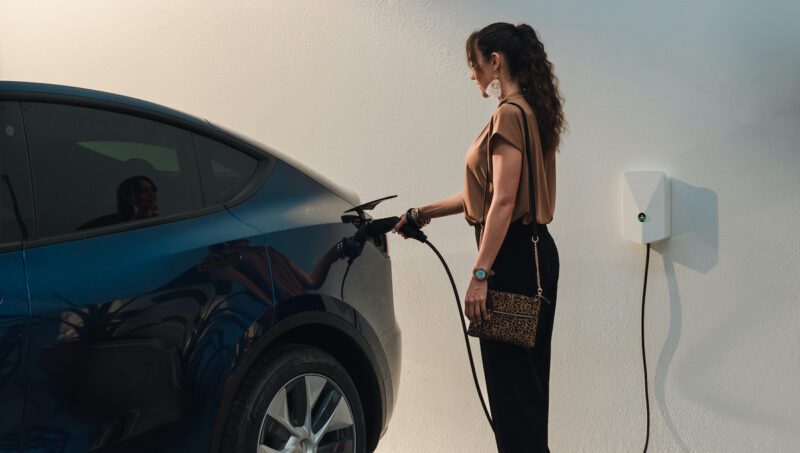To support and encourage good choices for Electric Vehicle charging at home, the Electric Vehicle Council has produced a simple brochure, designed for anyone who lives in a standalone home who is buying an EV.
You can download it here, or find it on the EVC website under “About EVs” >> “Charging”.
The EVC has focused on standalone homes with off-street parking for this piece of work, because that’s the majority of the building stock in our country and it’s also an easiest environment to tackle from the point of view of home EV charging.
Apartment complexes can be trickier for a range of reasons, with a wide variety of potential solutions.
For residents of apartment complexes in Australia, we recommend looking at the NSW state government’s excellent ‘EV ready buildings’ resources. People living in homes without off-street parking at all (about 7% of homes) will need to use public or kerbside charging – we recommend against pulling extension leads across footpaths.
Central control
While it’s clear that we don’t need the EV chargers in everyone’s homes to be centrally managed or controlled (we’ve talked about this before), there are lots of benefits to be had from EV drivers making good choices about when they charge their cars.
New EV drivers are often asking whether they need a dedicated EV charger at all.
The question, ‘will the power point on the wall be enough?’ is particularly important for renters looking to charge an EV at home, who will need the house owner’s permission to have an electrician install an EV charger – and, assuming permission is granted, will then need to work out who pays for it!
On timing, EV charging in the middle of the day soaks up excess solar. This can be from the roof of the building it’s parked at first, but also from other buildings nearby, because they share the electricity network.
It’s all in the timing
Depending on where the car is in the country, and how sunny it is at the time, this can massively reduce the upstream emissions associated with the driving it around.
Most EV drivers in standalone homes have solar panels – for them, this is also the cheapest way to charge the car. Charging in the middle of the night, if it’s not practical or convenient to charge in the middle of the day, will minimise strain on the energy networks.
This can also save the driver a lot of money if their retailer offers a discount for off-peak energy use. We recommend that anyone buying an EV should spend a few minutes looking at the retail offers available to them, and pick one that suits.
Successfully encouraging EV drivers to do most of their charging at non-peak times will usually save them money, without any downside – and the upside for everyone else is avoided network investment, which saves us all money on our power bills in the long run.
Power point or EVSE?
On equipment choice, drivers can charge at home from a standard power point on the wall. An eight hour charging session from a standard power point will deliver about 100km of range, a bit over double the daily average driving distance.
Alternatively, they can have an electrician install a dedicated mode 3 EV charger, which will enable a full recharge of most EVs on the market in about the same period of time.
There’s recommendations in the brochure on dedicated circuits for power points, smarts for fixed EV chargers, and the old ‘will I need to upgrade to three phase to charge my car?’ chestnut – to which the answer is generally going to be (spoilers) ‘no, single phase is fine’.
If you live in a house and you’re thinking about buying an EV – or you know someone who is – we hope it’s useful!
Comments welcome to [email protected]
Ross De Rango is the head of energy and infrastructure at the Electric Vehicle Council


